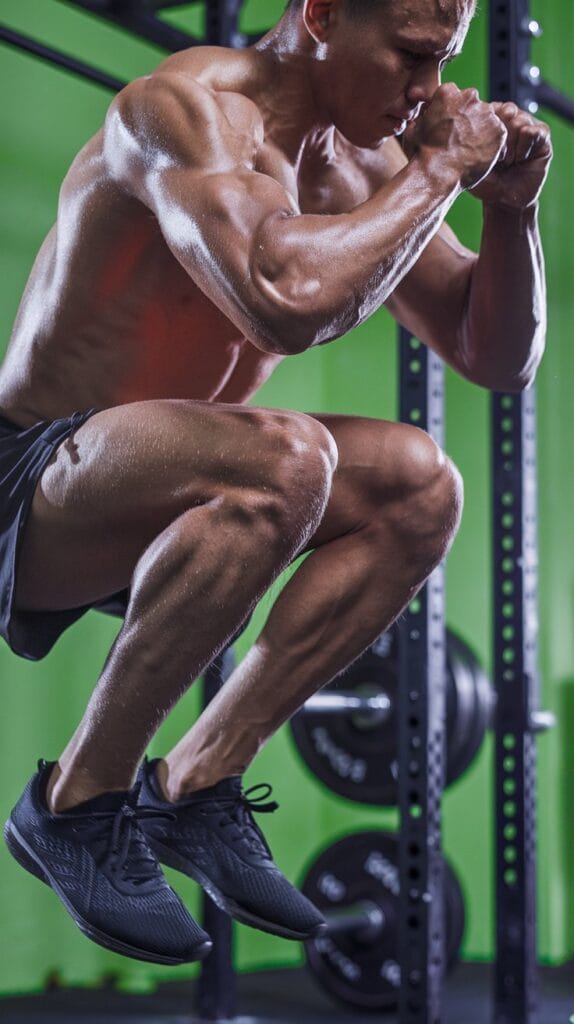FREE SHIPPING OVER $50
Stop Wasting Time on Calf Raises—These 5 Moves Will Actually Get You Results
Calf raises are often touted as the go-to exercise for building strong calves, and while they do have their place, they aren’t always the most effective for everyone. If you’re finding that your calves aren’t growing or strengthening the way you’d like, it’s not because calf raises are bad—it’s because your routine might be missing some variety and intensity.
In this article, we’ll explore why calf raises alone aren’t enough and share five alternative exercises that target your calves more effectively. These moves don’t just focus on strength—they also improve balance, endurance, and explosiveness.

Why Calf Raises Aren’t the End-All for Stronger Calves
Calf raises isolate the gastrocnemius (the bulky upper part of the calf) and the soleus (the lower, flatter muscle), which is great. However, they:
- Lack functional movement: Everyday activities require more dynamic strength, not just isolation.
- Can plateau quickly: Repeatedly doing the same movement without variation can limit muscle growth.
- Neglect variety: They don’t fully engage other stabilizing muscles or simulate the intensity of athletic activities.
Instead of abandoning calf raises altogether, you can supplement them with other dynamic exercises to fully unlock your calves’ potential.
5 Exercises That Deliver Better Results
1. Farmer’s Walk on Toes
This compound exercise combines strength, endurance, and balance.
How to do it:
- Grab a pair of dumbbells or kettlebells.
- Stand on your tiptoes and walk forward in a straight line for 30–60 seconds.
Why it works:
- Activates both the gastrocnemius and soleus.
- Builds functional strength while improving grip and core stability.
2. Box Jumps
Box jumps emphasize explosiveness, engaging the calves along with other lower-body muscles.
How to do it:
- Stand in front of a sturdy box or platform.
- Jump onto the box using maximum power, landing softly with both feet.
Why it works:
- Targets fast-twitch muscle fibers, essential for building power.
- Increases athleticism and cardiovascular fitness.
3. Seated Calf Raises with a Barbell
While standing calf raises target the gastrocnemius, seated variations emphasize the soleus.
How to do it:
- Sit on a bench with your knees bent at 90 degrees.
- Place a barbell or weight plate across your thighs.
- Raise your heels off the ground, then lower slowly.
Why it works:
- Adds variety by focusing on the soleus muscle.
- Builds muscle endurance for prolonged activities like running or hiking.
4. Jump Rope Intervals
Jump rope is more than a cardio workout—it’s a calf burner!
How to do it:
- Perform high-intensity jump rope intervals for 30 seconds, followed by 30 seconds of rest. Repeat for 5–10 minutes.
Why it works:
- Improves endurance, coordination, and strength simultaneously.
- Provides dynamic activation for the calves with every bounce.
5. Single-Leg Calf Raises
A more challenging twist on the classic move, this exercise isolates each calf.
How to do it:
- Stand on one leg on a flat surface or a step.
- Slowly raise your heel, then lower back down.
Why it works:
- Corrects imbalances between the left and right calves.
- Adds stability training, which is often overlooked.
How to Build a Well-Rounded Calf Workout
A successful calf routine incorporates a mix of isolation, dynamic, and functional movements. Here’s a weekly plan:
- Day 1: Seated Calf Raises + Farmer’s Walk on Toes
- Day 3: Jump Rope Intervals + Box Jumps
- Day 5: Single-Leg Calf Raises + Farmer’s Walk
Remember, calves recover quickly due to their high endurance, so training them 3–4 times a week is ideal.
Tips for Faster Results
- Increase Load Gradually
Don’t be afraid to go heavy on exercises like the farmer’s walk or seated calf raises. Calves are used to bearing weight, so they respond well to progressive overload. - Stretch and Strengthen
Incorporate calf stretches into your routine to enhance flexibility and reduce the risk of injury. - Focus on Form
Rushing through reps or bouncing at the top can limit your progress. Perform exercises slowly and with control. - Stay Consistent
Building stronger calves takes time and dedication. Commit to the routine, and results will follow.
Calf Training: A Balancing Act
While calf raises still hold value, they aren’t the sole answer to achieving well-rounded, powerful calves. By integrating these five exercises into your routine, you’ll not only strengthen your calves but also improve your overall athleticism and functionality.
Related Articles
- Farmers Carry Workout Explained: The Simple Move That Builds Serious Muscle
- Forget Sit-Ups—These 5 Moves Will Torch Your Core (And Your Excuses) in 30 Minutes
- Certified Trainer Spills: The Exercise Everyone’s Ignoring (But Totally Shouldn’t Be)
- Free 28-Day Somatic Workout Plan (PDF)
- Free 30-Day Calisthenics Workout Plan for Beginners







